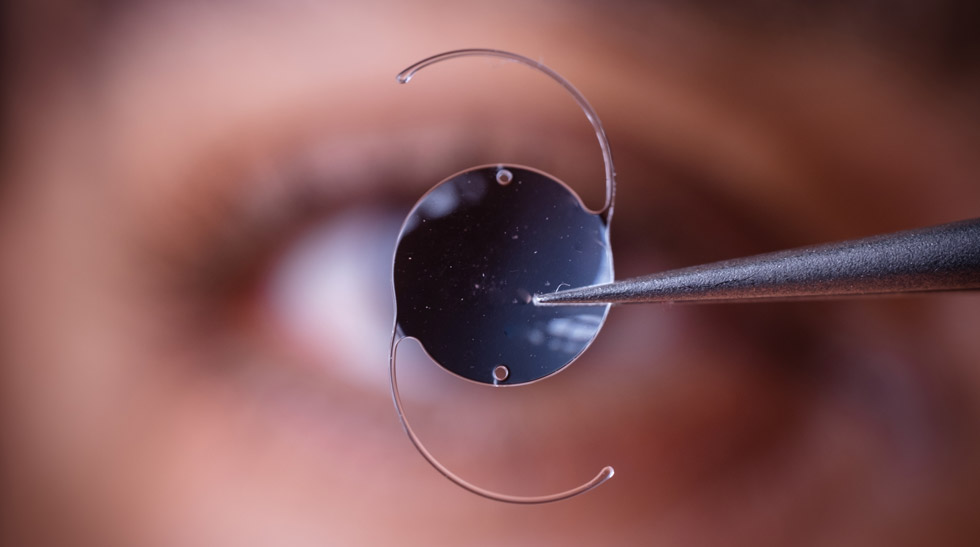
What Are The Different Types Of Cataract Lenses?
In our previous blog, we wrote about the symptoms of cataracts and the lead-up to surgery. We shared how cataract surgery involves removing the lens from your eye because it has become cloudy, causing vision impairments and discomfort. What we didn’t discuss is the replacement lens: what it is, and how does it work?
We wanted to look a little deeper into replacement cataract lenses and the difference between them. Did you know there are three different types of cataract lenses available? Well, let’s find out more!
What Are Intraocular Lenses? (IOLs)
IOL stands for Intraocular Lens Implant. These are artificial eye lenses made of plastic-like material that replicate your eye lens’s natural feel and structure. They are used in cataract surgery as they last a lifetime without being seen or felt by the individual. They have also been developed to create various types of lenses to support the visual needs of individuals.
The Different Types of Cataract Lenses
Depending on your visual requirements and eye health, there are three IOLs available, each with different features and benefits.
Monofocal or Standard IOLs
These are the most common types of replacement lenses used in cataract surgery. As its name suggests, it only has one (mono) distance, either nearsighted, farsighted or intermediate. Depending on your eye correction needs, it can be designed to meet your near vision, distance vision or intermediate vision requirements, sometimes resolving your need for glasses post-surgery.
Toric IOLs
These are seen as premium lenses as they are designed to treat multiple optical issues. Predominately, they help rectify astigmatism (when your vision struggles to focus horizontally or vertically), but they also help short or long-sighted requirements, too.
Multifocal IOLs
Like bifocal and varifocal lenses, multifocal IOLs support nearby and distance eye correction. The lens splits into various zones, holding different prescription strengths in each section. When combined into one lens, it creates a clear, complete picture.
Why Are Our Eye Lenses So Important?
The lens of your eye is the thin, curved part of your eye that sits behind your iris. As light comes through your pupil. the lens’s job is to bend and focus the light in different directions to help you see objects and distances accurately. Due to its adaptability, it can alter where and how the light is shaped to determine depth and distance. If you suffer from cataracts, the lens becomes cloudy, preventing it from doing its job and stopping you from seeing things clearly.
How To Choose The Best Cataract Lens For You
Although the thought of cataract surgery might be daunting, there are benefits to receiving an IOL. Not only will it remove any blurriness and restore your vision, but with the right cataract lens, you could even improve your eyesight from before the op!
For example, by choosing a multifocal IOL, you can easily switch your focus from reading a book to watching TV without putting on or removing glasses. If you choose a monofocal IOL, you could resolve your myopia and no longer require glasses to focus on distances. Although cataract lenses will not cure your eye correction forever, they can aid your lifestyle.
We always recommend discussing your options with your optician or an eye specialist. They will evaluate your situation and suggest which cataract lens is best suited to you. But here are some questions to consider in helping you decide:
- What are your current vision requirements?
- What’s your occupation?
- Do glasses aid your hobbies and lifestyle?
- Do you have any other eye conditions?
- Do you drive a lot?
- What’s your budget for lenses and glasses?
- Do you enjoy wearing glasses?
- Would you prefer wearing them for reading or distance?
How Long Do Cataract Lenses Last?
Cataract surgery is a permanent procedure, and the replacement lenses (IOL) are built to last the rest of your life. They won’t degrade or become cloudy like natural lenses, meaning you won’t have to go through cataracts again. Although the artificial intraocular lenses (IOL) can help with existing visual issues such as myopia or hyperopia, they won’t prevent your eyesight from changing as you age, and glasses may still required at some point.
How To Care For Your Lenses After Cataract Surgery
The good news is that cataract surgery is a relatively quick and straightforward operation, and you’ll often be home on the same day. Within the first few days post-surgery, you’ll have eye drops and a patch to protect your eye. Avoid rubbing your eyes, and be mindful when showering to avoid soap getting into your eyes. When outside, wear sunglasses, polarised or transitional lenses to protect your eyes as they adjust to their new lens.
Finally, you can make sure you’re wearing the right glasses and sunglasses to meet your new optical prescription. Book to see your optician after your surgery and then request a pack from Lensology, who can upgrade your existing glasses to meet your latest requirements.






